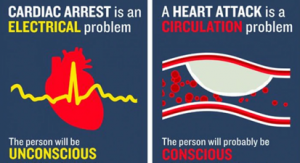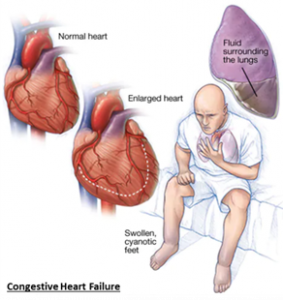Contribute
| ICC: Health And Wellness Awareness – Education With A Purpose |
Dr. Harshad Sanghvi
03/01/2023
As part of Indian Circle for Caring's 'Health and Wellness Awareness – Education with a purpose' series, here are 2 Heart Health Myths and Real Facts. Fact: Heart attack is not the same as a Cardiac arrest. A heart attack and a cardiac arrest are both emergency situations, but different. Heart attack is a circulation problem. A heart attack occurs when one of the coronary arteries is completely blocked, shutting off the vital blood supply to the heart muscle. If left untreated, the heart muscle begins to die because it is not getting oxygen resulting in a scar. The person will probably be conscious and breathing with some symptoms like chest pain, shortness of breath and/or sweating. If treated promptly with thrombolytics (blood clot dissolving drug), we can prevent or minimize heart damage. You should call 911 and keep them calm. Cardiac arrest is an electrical problem. A cardiac arrest occurs when a person’s heart stops beating resulting in no blood getting pumped out of the heart causing sudden collapse, loss of consciousness and absent breathing. Cardiac arrest happens because of dangerous heart rhythm. It’s true that many cardiac arrests can occur in adults because of heart attacks, but they can also occur related to primary heart rhythm problems without heart attack. You should call 911 and start CPR. When cardiac arrest does occur, rapid treatment with a medical device called an automated external defibrillator (AED) can be lifesaving. An AED is a type of computerized defibrillator that automatically analyzes the heart rhythm in people who are experiencing cardiac arrest. When appropriate, it delivers an electrical shock to the heart to restore its normal rhythm. Fact: Heart failure does not mean that the heart has stopped beating. Heart failure means that the heart keeps working, but it does not pump blood as well as it should because of weakened or damaged heart muscle (systolic heart failure) or because it is too stiff (diastolic heart failure). This results in fluid backing up in the lungs causing shortness of breath, cough, and wheezing (left-sided heart failure) or in the legs causing swelling of the ankles and feet (right-sided heart failure). Heart failure can develop suddenly or slowly over a period of months or years. The most common reason is that your heart muscle has been damaged, for example after a heart attack. But it can also happen after a long standing high BP condition, faulty heart valves, cardiomyopathy, alcohol abuse, abnormal heart rhythm, diabetes, or use of certain medications. On the contrary, Cardiac arrest means that the heart stops beating suddenly and unexpectedly. This means that blood stops flowing to the brain and other vital organs resulting in unconsciousness and absent breathing. Cardiac arrests happen because of dangerous heart rhythms. In such a situation a person can die within minutes if untreated. Using a defibrillator for a sudden cardiac arrest can be lifesaving.Myth#5 – Cardiac arrest is same as Heart attack:

Myth#6 – Heart failure means that the heart stops beating.

You may also access this article through our web-site http://www.lokvani.com/
